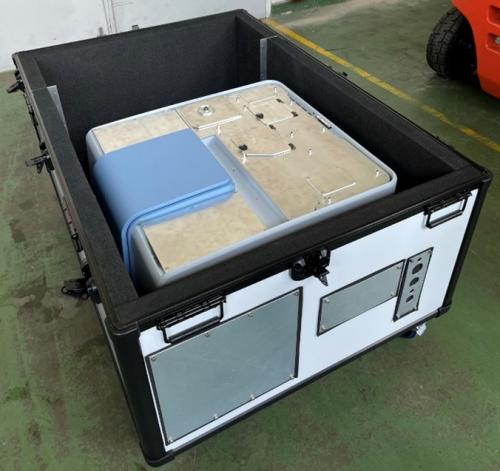State-of-the-art remote sensing greenhouse gas measurements
Ground-based high-resolution Fourier transform infrared (FTIR) passive remote sensing networks like the Total Carbon Column Observing Network (TCCON) and the Infrared Working Group of the Network for the Detection of Atmospheric Composition Change (NDACC-IRWG) have been key facilities for the validation of satellites measuring greenhouse (GHGs like CO2, CH4, N2O) and pollution (CO) gases.
Even though these networks form the baseline for high-precision and accurate total column measurements of GHGs, the number of stations available worldwide is limited. To improve on the satellite measurement validation, a denser distribution of stations covering different surface conditions (albedo), atmospheric conditions (humidity, dry, polluted, presence of aerosol), closer to emission hot spot regions, a wide latitudinal and seasonal distribution are needed.
For this reason, several groups have investigated supplemental portable low-cost instruments which can complement the existing networks and enhance the validation of satellite measurements and emission quantification of a region or hot spots.
Fiducial Reference Measurements for Greenhouse Gases (FRM4GHG)
The Fiducial Reference Measurements for Ground-Based Infrared Greenhouse Gas Observations is a European Space Agency (ESA) funded project co-lead by BIRA-IASB, focusing on the intercomparison of new and established compact remote sensing platforms (Figure 2) and on the harmonization of retrievals and products to get Fiducial Reference Measurements (FRM) for greenhouse gases.
BIRA-IASB in collaboration with University of Bremen has worked on such a compact FTIR spectrometer of the type Bruker Vertex70. The instrument showed comparable performance as the TCCON and another low-resolution spectrometer, the Bruker EM27/SUN, which belong to the Collaborative Carbon Column Observing Network (COCCON) (Sha et al., 2020).
In the second and currently running phase of the FRM4GHG project, we are developing an enclosure system for the FTIR spectrometer coupled with a homemade compact solar tracker and weather station for automatic operation of the system (Figure 3).
Once ready, we will extensively test the instrument operated in the new weatherproof enclosure system before deploying it at the Congoflux tower ecosystem site in the Democratic Republic of Congo as part of the Belgian ICOS-BE project.
Reference:
Sha, M. K., De Mazière, M., Notholt, J., Blumenstock, T., Chen, H., Dehn, A., Griffith, D. W. T., Hase, F., Heikkinen, P., Hermans, C., Hoffmann, A., Huebner, M., Jones, N., Kivi, R., Langerock, B., Petri, C., Scolas, F., Tu, Q., and Weidmann, D.: Intercomparison of low- and high-resolution infrared spectrometers for ground-based solar remote sensing measurements of total column concentrations of CO2, CH4, and CO, Atmos. Meas. Tech., 13, 4791–4839, https://doi.org/10.5194/amt-13-4791-2020, 2020.


